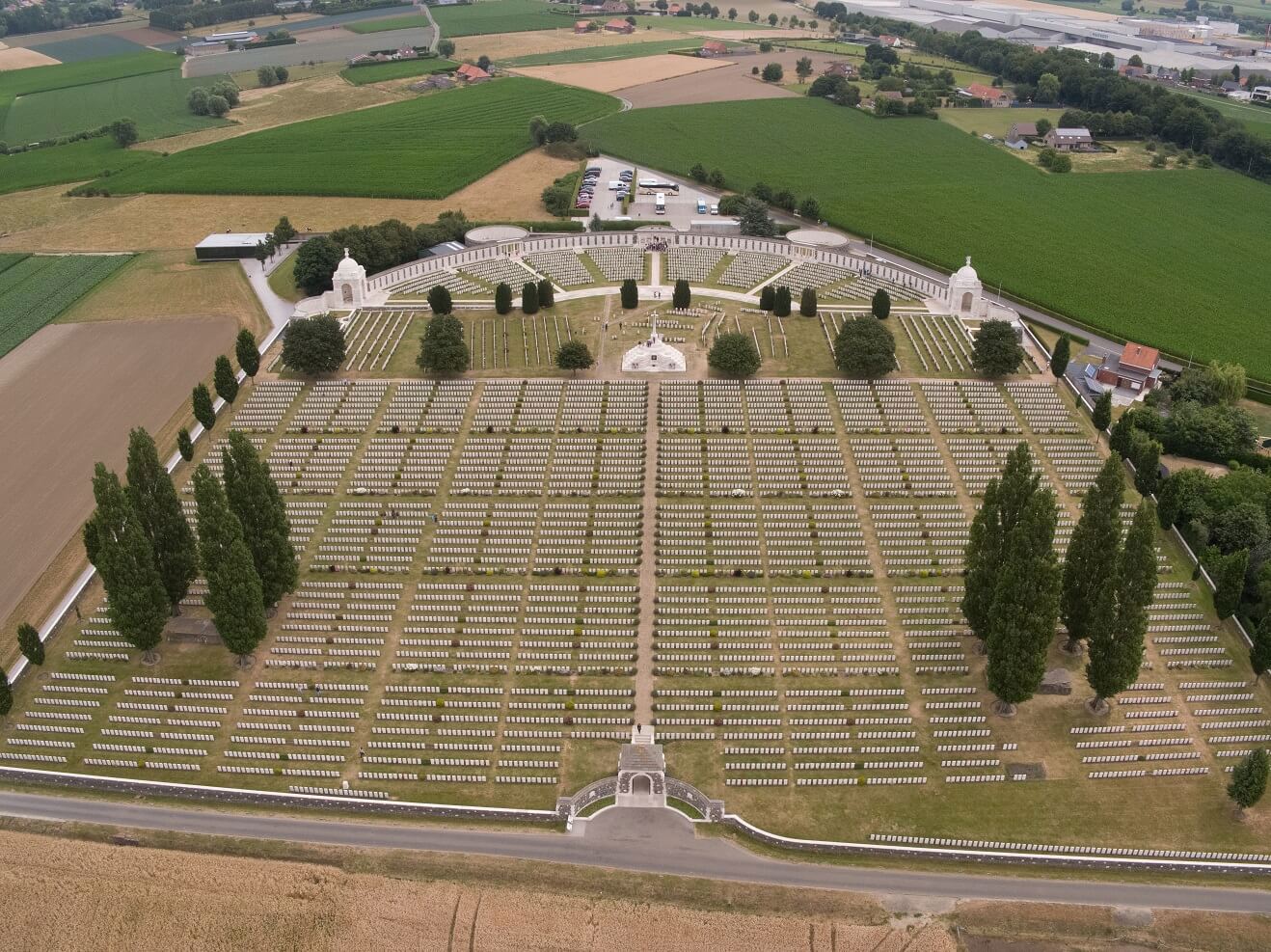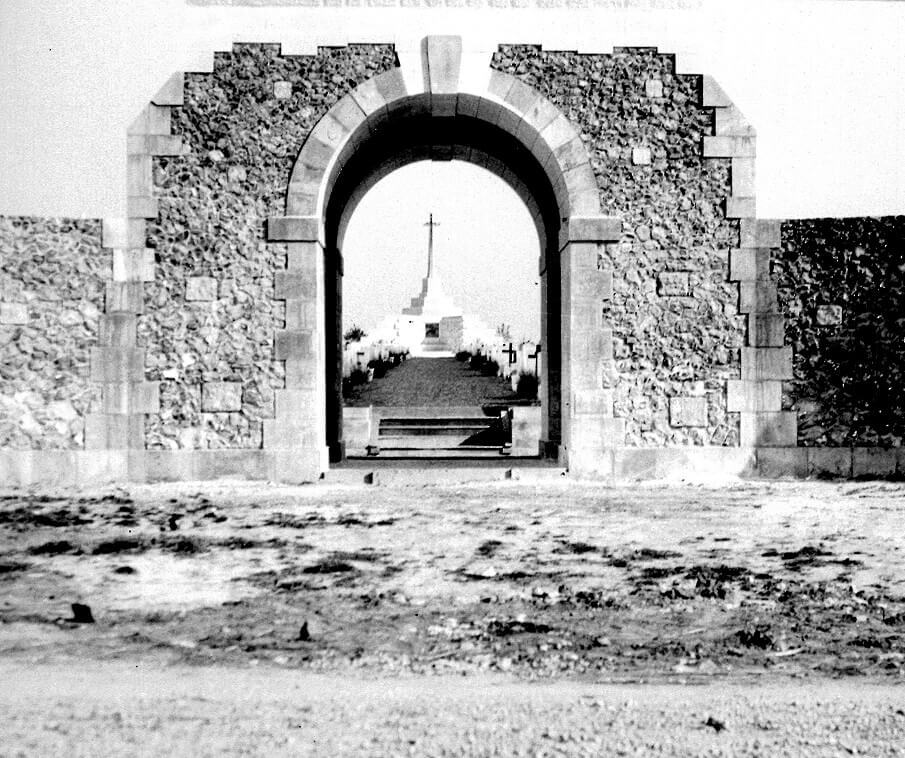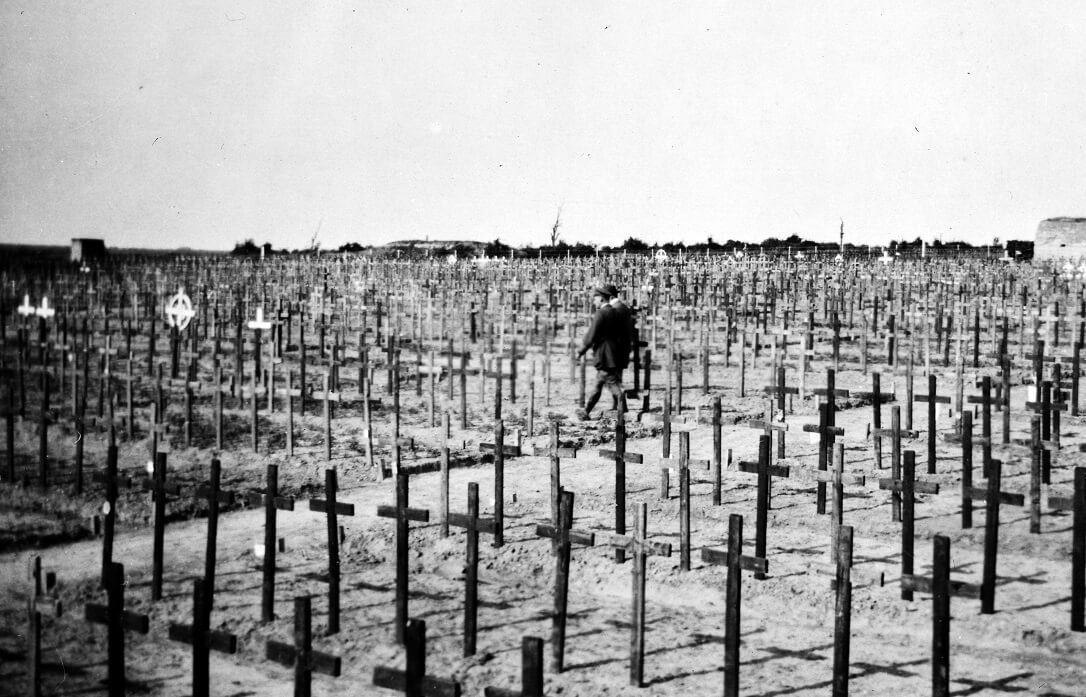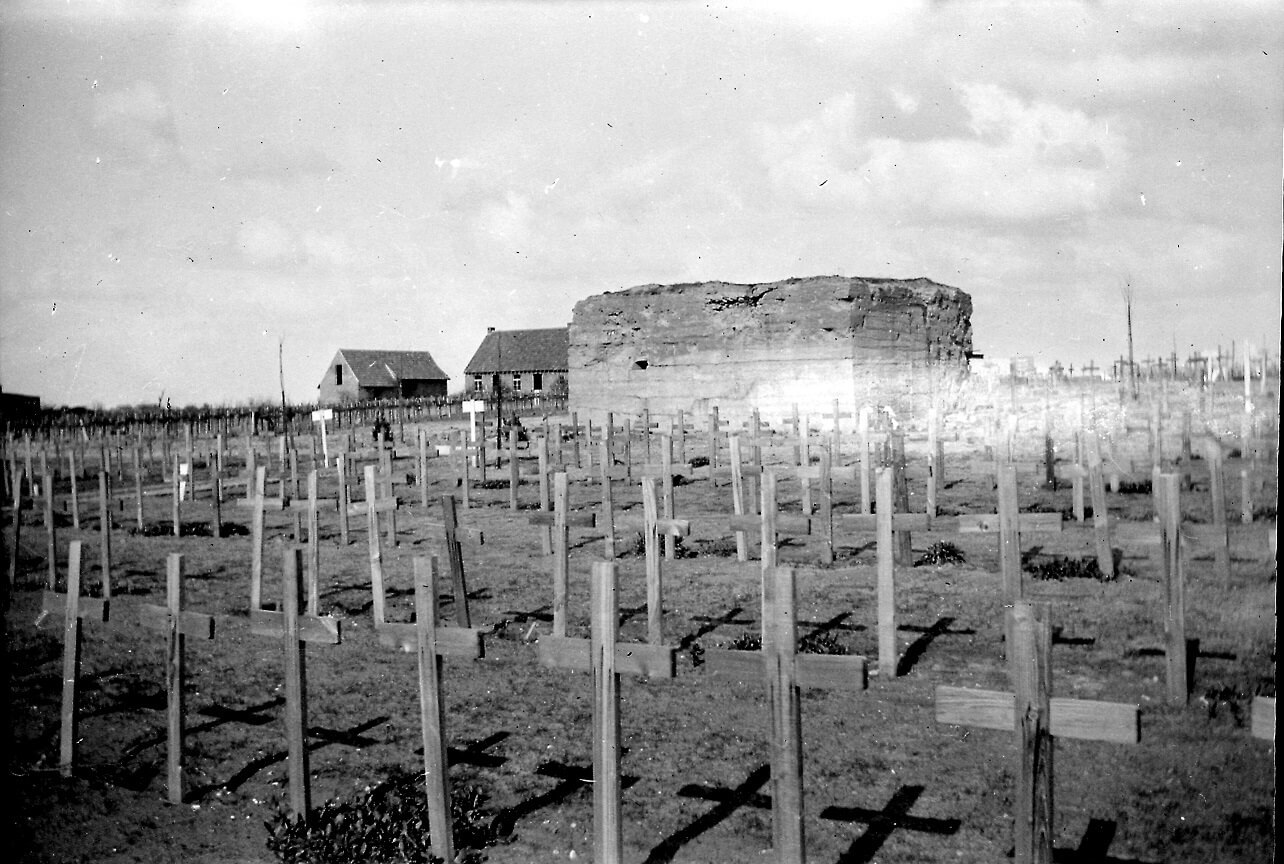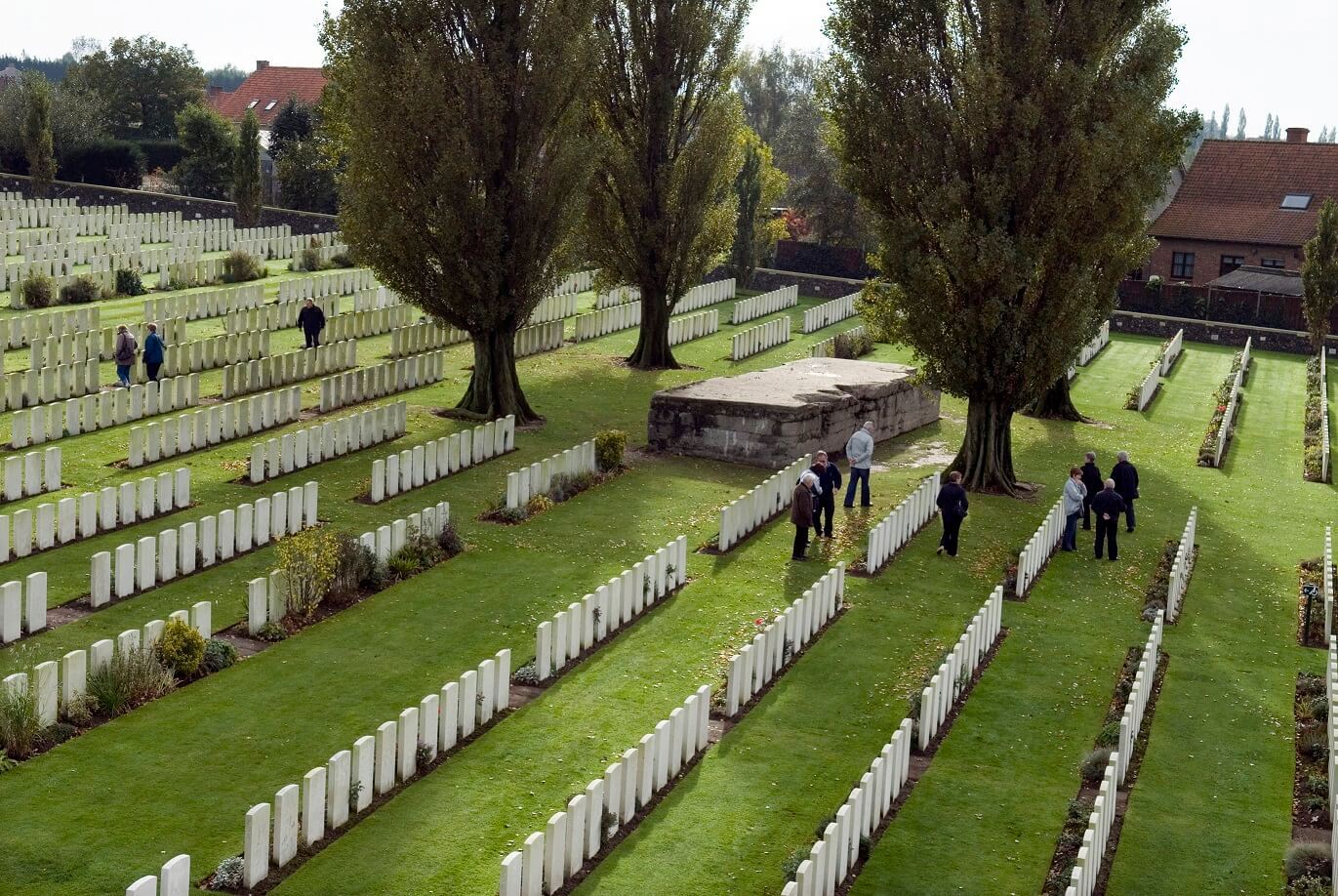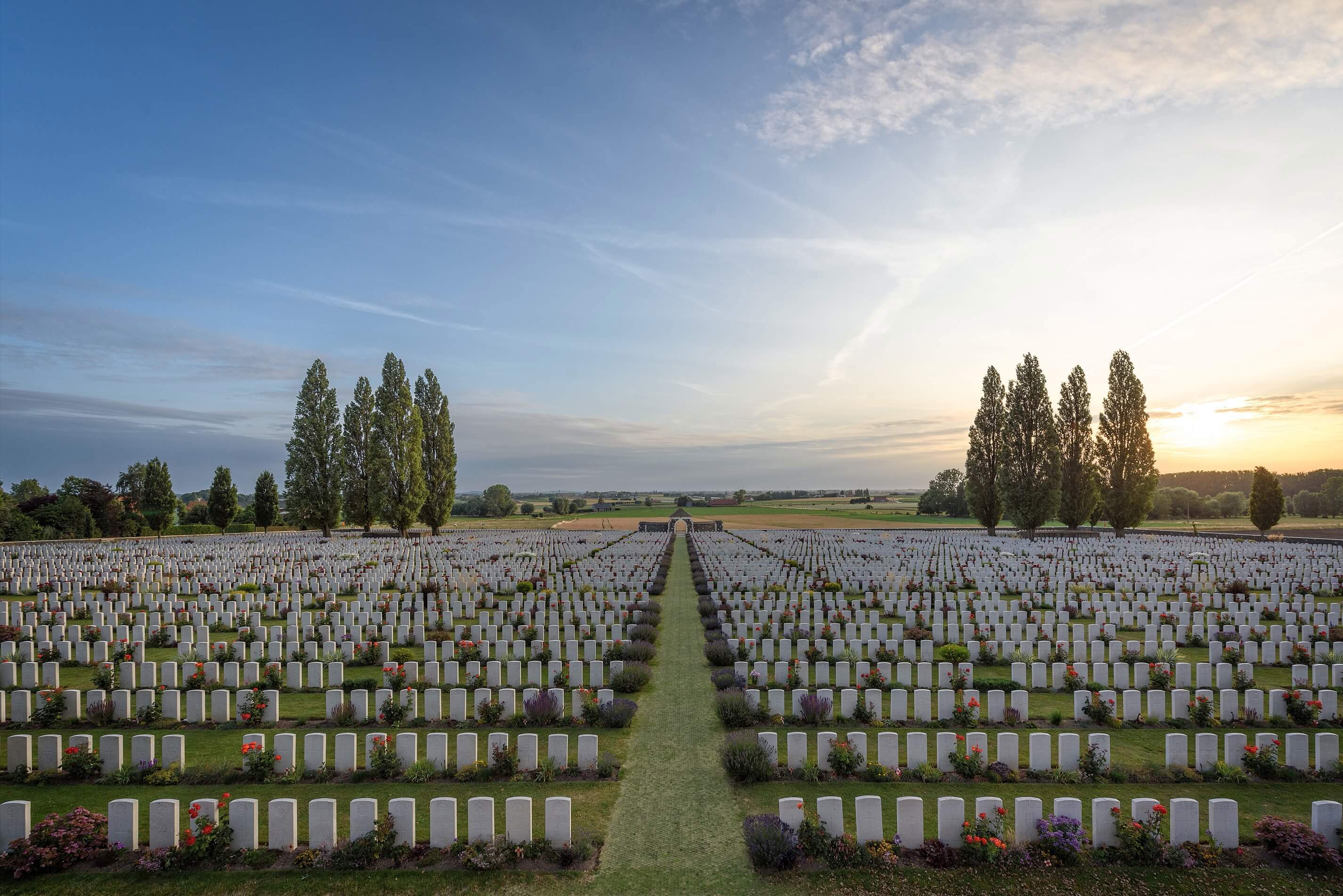15 October 2021
What is the largest Commonwealth War Cemetery?
Around the world, the Commonwealth War Graves Commission (CWGC) commemorates the fallen of the Commonwealth forces who died during the two World Wars. Some of our sites are small and intimate, with only a handful of graves, others are vast and dramatic, with many thousands of headstones. But the largest Commonwealth War Cemetery maintained by the CWGC today is Tyne Cot Cemetery in Belgium.
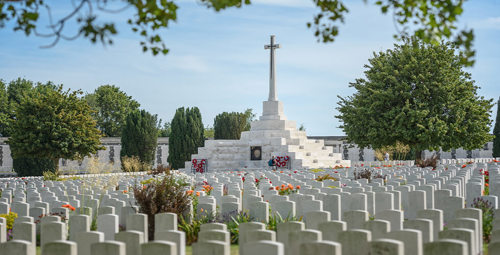
10 Largest CWGC World War Cemeteries
- Tyne Cot Cemetery, Belgium – 11,968 burials
- Etaples Military Cemetery, France – 11,553
- Lijssenthoek Military Cemetery, Belgium – 10,786
- St. Sever Cemetery Extension, France – 8,685
- Reichswald Forest War Cemetery, Germany – 7,671
- Cabaret-Rouge British Cemetery, France – 7,661
- Poelcapelle British Cemetery, Belgium –7,478
- Baghdad (North Gate) War Cemetery, Iraq – 7,420
- El Alamein War Cemetery, Egypt – 7,368
- Serre Road Cemetery No.2, France – 7,137
Explore some of the biggest war cemeteries in the world cared for by the CWGC…
Largest WW1 cemetery
After Tyne Cot, other large WW1 cemeteries include Lijssenthoek Military Cemetery, Belgium (10,786 burials), and Serre Road Cemetery No.2, France (7,137 burials).
Largest WW2 cemetery
The largest CWGC cemeteries commemorating World War Two casualties are the Reichswald Forest War Cemetery in Germany (7,671 burials) and El Alamein War Cemetery in Egypt (7,368 burials).
Largest war cemetery in Belgium
The largest CWGC in Belgium is Tyne Cot Cemetery (11,978 burials). The next largest are Lijssenthoek Military Cemetery (10,786 burials) and Poelcapelle British Cemetery (7,478 burials).
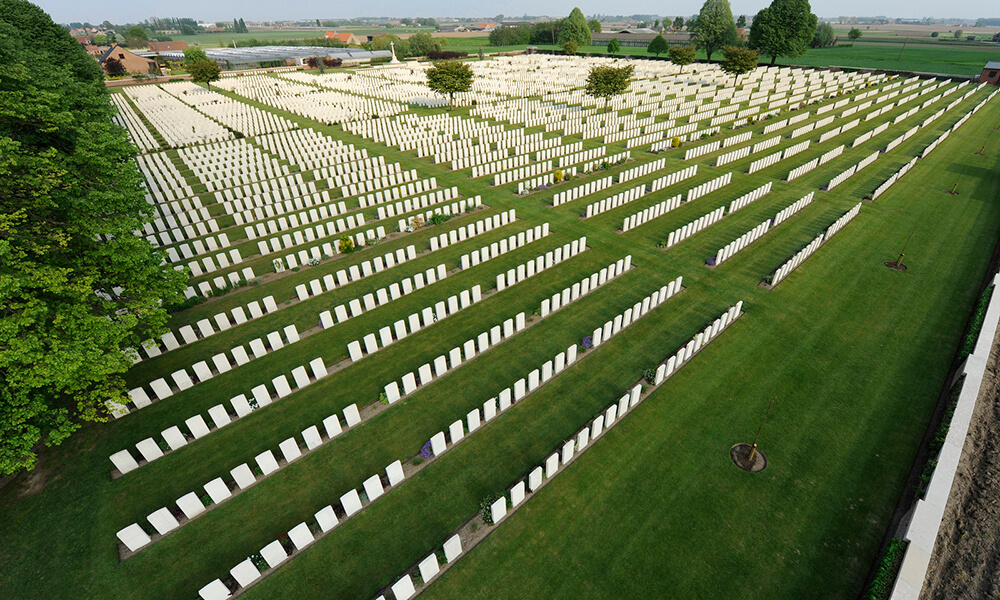
Largest war cemetery in France
The largest CWGC war cemeteries in France are Etaples Military Cemetery (11,553 burials), St. Sever Cemetery Extension (8,685 burials) and Cabaret-Rouge British Cemetery (7,661 burials).
Largest German war cemetery
Currently the largest German war cemetery is Rossoschka German Military Cemetery in the Rossoschka Memorial Cemetery in Volograd, however the Sologubovka German War Cemetery, near St. Petersburg, which currently holds more than 56,000 war dead could soon surpass it as burials are brought in from smaller sites in the region.
Largest war cemetery in Europe
The Rossoschka Memorial Cemetery in Volgograd (formerly Stalingrad) in Russia contains more than 80,000 burials, including more than 60,000 German casualties from the battle of Stalingrad, more than 20,000 Russian war dead and more than 2,000 Romanian dead. The Battle of Stalingrad was one of the bloodiest of the war, and casualties from the battle are still being found today.
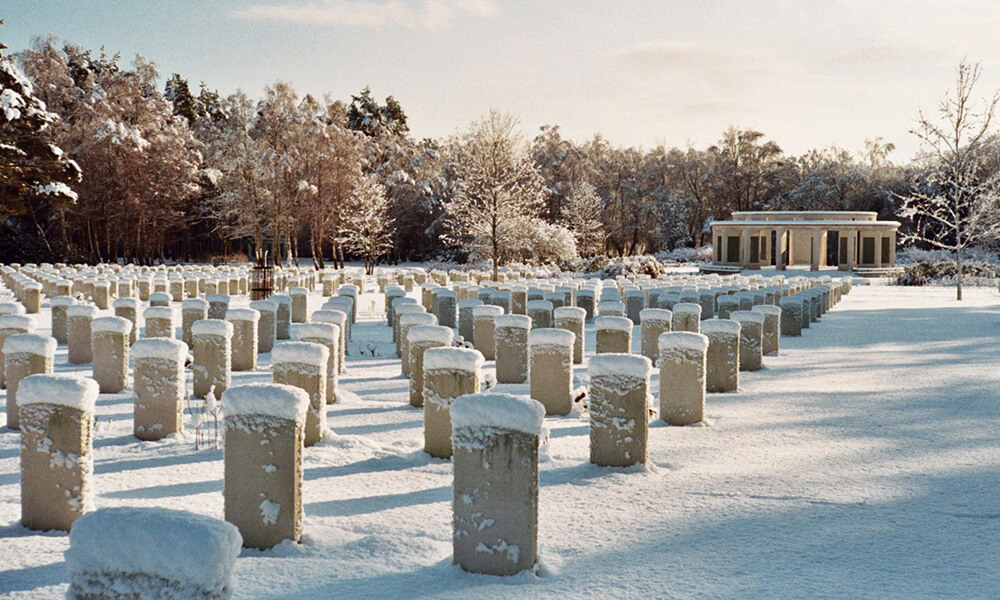
Largest British war cemetery
The largest war cemetery in Britain is the Brookwood Military Cemetery in Surrey. There are more than 5000 Commonwealth burials from both world wars in the cemetery, as well as burials from other nations, including France, Italy and Czechoslovakia. There are also two memorials to the missing at Brookwood, one for each of the world wars.
What is the largest military cemetery in the world?
Arlington National Cemetery, Virginia USA, is the largest military cemetery in the world, with more than 400,000 military veterans and other eligible burials. With its first burial in 1864, Arlington National Cemetery contains war dead from every major military conflict from the American Civil War through to modern conflicts.
Want to learn more? Discover some of the best war cemetery tours in our guide.
What is the largest COMMONWEALTH war cemetery in the world?
Tyne Cot is the largest Commonwealth war cemetery in the world in terms of burials which is maintained by the CWGC. There are now 11,961 Commonwealth servicemen who fought on the Western Front commemorated in Tyne Cot Cemetery.
What Happened at Tyne Cot during World War 1?
Tyne Cot Cemetery is located in an area called the Ypres Salient, where British and Commonwealth, French, Belgian and German forces fought continuously throughout World War 1 (1914-1918). Both sides launched huge attacks here and hundreds of thousands of soldiers were killed.
In 1917, British forces launched a massive attack in the Ypres Salient. The Third Battle of Ypres, often known today as the Battle of Passchendaele, raged from July to November 1917, and forces from the UK, Australia, Canada, New Zealand and South Africa fought to push the Germans off the low ridges that dominated the area.
The Germans had built strong defences, digging miles of trenches, constructing hundreds of concrete blockhouses or bunkers and installing thick belts of barbed wire. Casualties on both sides were very high, but the Germans were slowly pushed back.

Men of the 4th Coldstream Guards perch on wrecked gun by a blockhouse on the outskirts Houlthulst Forest, 9 Oct 1917 © IWM Q 6046
On 4 October 1917, the 3rd Australian Division captured a group of German bunkers on the ridge below the village of Passchendaele. The largest of the bunkers was used as a Regimental Aid Post to provide care to wounded soldiers. Those who succumbed to their wounds were buried outside the entrance to the bunker.
The first burials were made on 9 October 1917, and by the end of the war 340 Commonwealth soldiers and four German soldiers had been buried here. After the war, this small cemetery was selected as the location for what would become the vast Tyne Cot Cemetery.
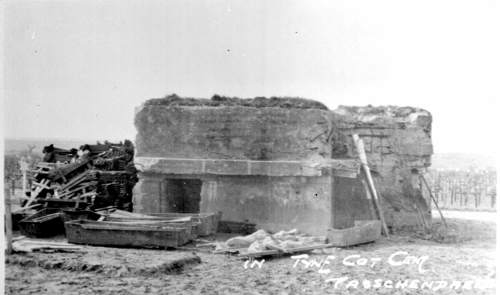
Tyne Cot bunker that was used as an aid post during the War © CWGC
These original graves are distinct from all the others in the cemetery today because of their disordered layout. These men were buried during the battle, when there was no plan or design, and often multiple men were buried together in quickly dug shallow graves or shell holes. In one of the two original plots you will find 27 men buried together in a mass grave, their names inscribed on just seven headstones which are grouped closely together.
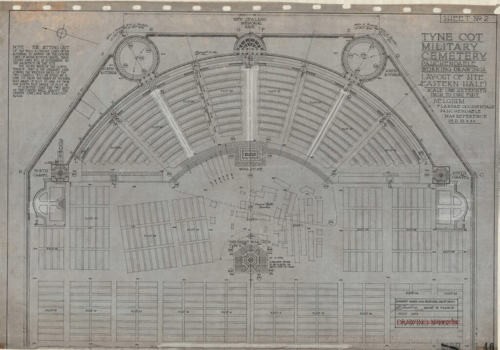
The disordered war-time plot can be seen at the heart of the cemetery, surrounded by ordered rows of post war burials. Tyne Cot Cemetery and Memorial design drawings, 1923 © CWGC
How did Tyne Cot Cemetery become the Largest Commonwealth Cemetery?
After the end of World War 1 in November 1918, teams of soldiers of the Army’s Graves Registration Units (GRU) searched the battlefields for the dead. The area around Tyne Cot was a wasteland of shell holes as far as the eye could see. Almost nothing remained of the nearby village of Zonnebeke, while Passchendaele village had been obliterated entirely. Tens of thousands of soldiers had died in this small corner of the Ypres Salient.

Some of the dead were buried in small makeshift cemeteries, others lay where they had fallen months, if not years before. Some 8,000 GRU personnel scoured the entire Ypres Salient to search for and recover their fallen comrades. The personnel were divided up into labour companies who each had responsibility for a 500m2 area of devastated former WW1 battlefield.
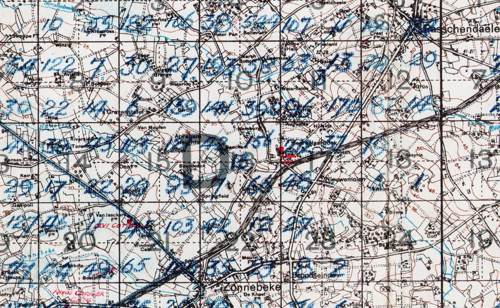
This map was made by the GRU units operating in the area around Tyne Cot in 1919. The number in each square denotes the number of remains believed to be buried in that 500m2 area.
When the GRU teams found a body, they would carefully examine the remains to see if they could identify an individual. Details like their rank and regiment could sometimes be gained from a uniform, but often an identification was impossible after the body had laid in the earth for a long time.
It was hard and distressing work, but most of the cemeteries you can visit today exist because of the perseverance of the GRU teams who worked tirelessly for many years after the war to recover and lay the war dead to rest.

Graves Registration Unit team search for remains on the former battlefield c. 1920. The Goodland Collection © CWGC
The scale and ferocity of the fighting in the area immediately around where Tyne Cot Cemetery now stands meant that when the GRU teams searched the area, many thousands of bodies were found. Tyne Cot’s central location near where the fighting had been heaviest made it an ideal site for a large cemetery to be created, as bodies only needed to be transported a short distance for burial.

Remains covered with a Union Flag are brought for burial at a cemetery in Belgium, c. 1920. The Goodland Collection © CWGC
When was Tyne Cot Cemetery built?
- October 1917 to April 1918 – Plots 1 & 2 created during the war
- June 1919 to September 1920 - Plots 3 to 32 created by 728th Labour Company, GRU
- March 1920 to December 1920 – Plots 33 to 57 created by 126th labour Company, GRU
- Spring 1920 to April 1921 – Plots 58 to 67 created by No.1 Platoon, GRU
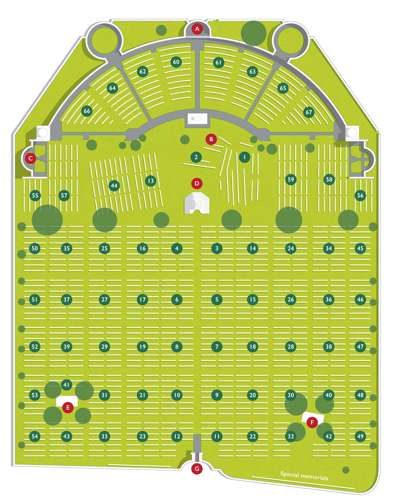
Map of Tyne Cot Cemetery
Bodies wrapped in canvas sheet were brought on horse-drawn trucks to the cemetery. They were placed in long trench graves and what details about an individual had been found were stamped on aluminium strips which were attached to rough wooden crosses above each grave. By the end of 1921, 11,871 men had been buried at Tyne Cot. Over the following decades, 97 more burials were made here, making Tyne Cot the largest CWGC cemetery anywhere in the world.
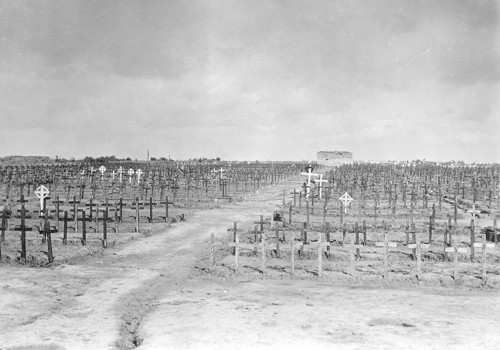
Tyne Cot Cemetery c.1920. Wooden crosses mark the graves, and the central bunker can be clearly seen at the heart of the cemetery.
The work of the Imperial (Commonwealth) War Graves Commission
Founded in 1917, the Commission had no responsibility for the recovery of remains or the vast majority of the war cemeteries in France and Belgium until 1921, when the Army officially stopped the search for the dead. A Commission drawing office in St Omer, France, provided many of the design layouts for the new plots and cemeteries that were being created. Over the next 17 years Commission architects worked to design and build the cemeteries and memorials you see today.
At Tyne Cot, the layout plan for the burial ground was made in 1919 by John Truelove, who served in France with the London Regiment until he was wounded in action in 1915. After the Commission took over responsibility for Tyne Cot in 1921, plans for the transformation of the cemetery were begun by Truelove and Sir Herbert Baker, one of the Commissions principal architects.
Tyne Cot Cemetery Design
Baker and Truelove mixed classical design with touches of old English country churches, gardens and houses to create a simple, yet sentimental and stunning place of remembrance.

Entrance building designed by Sir Herbert Baker, Tyne Cot Cemetery © CWGC
The entrance feature of Portland stone and napped flint is modelled on the entrance gate of Winchester College, and it frames the Cross of Sacrifice that dominates the entire cemetery.
In May 1921, King George V visited Tyne Cot and was shown the plans to incorporate into the design the German bunkers that had been captured by the Australians during the Third Battle of Ypres. The King approved, and today two of the bunkers are still visible, and the Cross of Sacrifice stands on the top of the large central bunker that had been the Regimental Aid Post during the war.
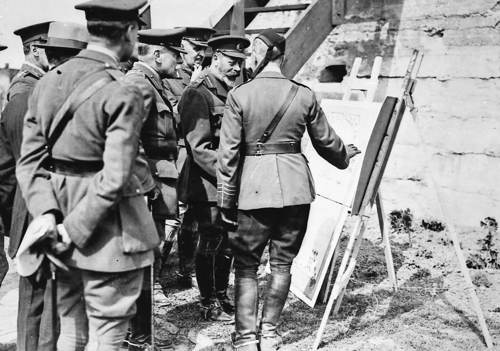
King George V reviews designs for Tyne Cot Cemetery, 11 May 1921. The Goodland Collection © CWGC
Construction of the Cross of Sacrifice was completed in 1924, and over the next three years, the rough wooden crosses were steadily replaced with Portland stone headstones. In 1927, two stone sculptures of kneeling angels laying wreaths were completed on the top of the pavilions of the Tyne Cot Memorial. These were created by Ferdinand Blundstone and Joseph Armitage. They are the only angels in the CWGC estate.

One of the Tyne Cot Memorial Angel by Ferdinand Blundstone and Joseph Armitage © CWGC
What is the Tyne Cot Memorial to the Missing?
The Tyne Cot Memorial was built after it was discovered that the enormous Ypres (Menin Gate) Memorial was not big enough to fit the names of all the Commonwealth servicemen who had died in the Ypres Salient during the War and had no known grave.
The Tyne Cot Memorial commemorates 35,000 missing servicemen of United Kingdom and New Zealand forces, many of whom died on the battlefields around Tyne Cot during the Third Battle of Ypres. It runs for 230 metres along the entire length of the rear of the cemetery.

The Tyne Cot Memorial © CWGC
Tyne Cot Cemetery and Memorial were officially dedicated on 19 June 1927. There was no great ceremony, but a small crowd gathered for a short service led by Reverend F. Molyneux, the former chaplain of the New Zealand Division. Several speeches were made, wreaths were laid, and the hymn ‘O God, Our Help in Ages Past’ was sung.
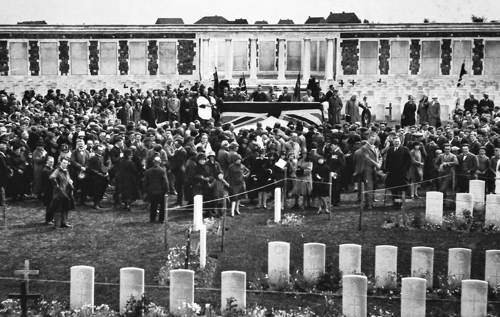
Tyne Cot Cemetery and Memorial dedication service, 19 June 1927 © CWGC
Since 1927, Tyne Cot has been a place of pilgrimage. Today, it is one of the most visited World War 1 cemeteries in the world. It remains one of the starkest reminders of the human cost of war.
CWGC looks after over 23,000 memorial sites around the world. Visit more war cemeteries and memorials by using our search tool.




